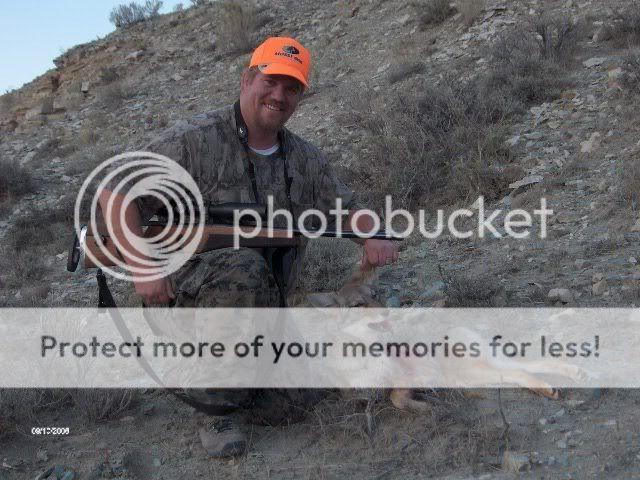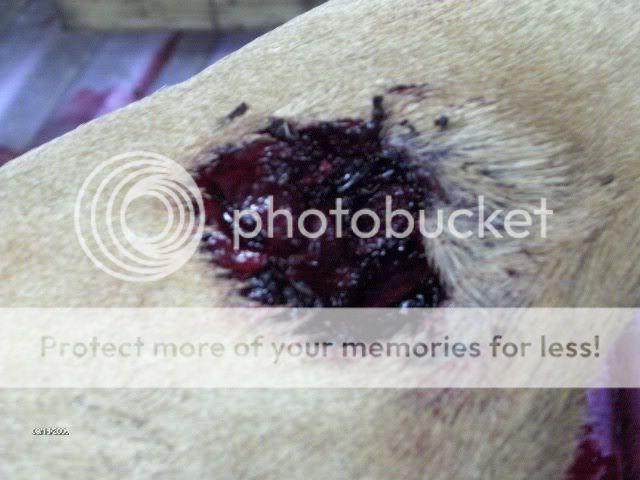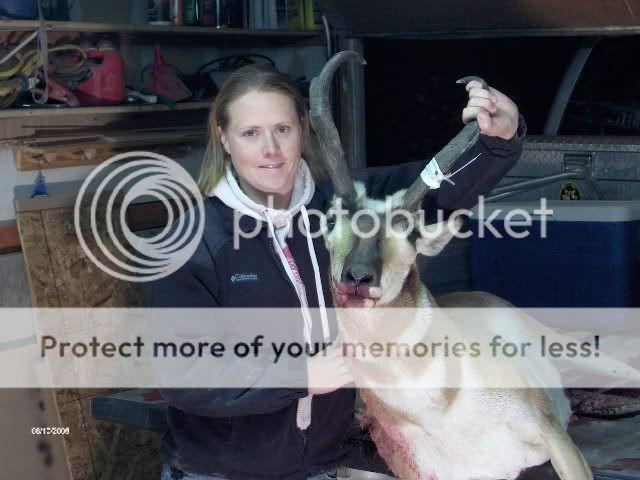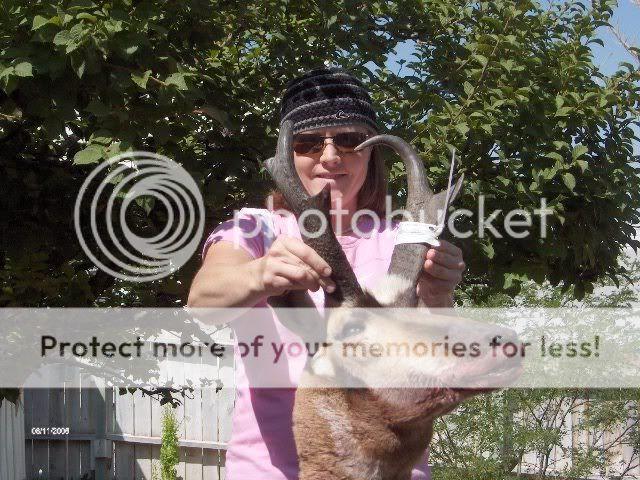Based on advice from an earlier post, I bought some .308 cal. 180 gr Nosler Accubonds to shoot out of my 308 Tikka M595 for a trophy deer hunt. The load was pushing the Accubonds at around 2600 feet per second.
Before Deer and Elk season here, we have antelope season, which is a great time for testing loads, bullets, and equipment. I had about 20 bullets loaded up. The wife and I (both with tags) headed out in the afternoon. For the sake of reporting on the bullets performance, I will keep the details to a minimum (for me), but may post a more detailed version on the hunting forum.
The first target, a coyote, was at 280 yards and stood around just long enough for me to get a shot off. Upon being hit it jumped up, did a flip, then ran 20 yards and expired. The exit hole was around 4-5 inches diameter.
Sorry, not much bullet damage detail on any of the images. The next target, a decent buck antelope, was at 304 yards broadside when my wife pulled the trigger. Other than hearing the bullet impact, there was not any indication that the buck was hit. It did not even flinch. It took off running at just under the speed of light, first straight away, then it turned perpendicular to us. At this point I could see blood on its chest. The wife let another shot go. Still no indication of a hit. After running another 150 yards it turned hard right and crashed into the other buck that was running with it, practically knocking it over. Then he went down.
Now for the damage assesment: The first shot went behind the shoulder about two ribs back from the shoulder, just above the white patch. A solid double lung shot. the bullet hit a rib on the way in and left about a one inch hole. On the exit there were three holes in a triangle pattern, about 2 1/2 to 3 inches apart. The second shot hit low on the rear leg. The entrance hole was about 2 inches in diameter and hollow. There was not an exit hole. The bone was not broken. There were not any significant bullet fragments recovered. It appeared that the bullet just disintigrated. Here is a picture of the shot to the leg:
A few more pictures of the wife's speed goat:
Note the 3x2 horns:
The question that I am left with is how are these bullets going to perform on a more heavily boned animal like an elk?




